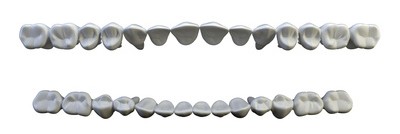Bio-Compatible Fillings/Onlays/Inlays/Bonding
Metal Free Fillings
When the decay has progressed to the point that a portion of the tooth needs to be removed, Dr. Taylor uses the most bio-compatible restoration materials available to place fillings. We use mercury free filling materials only. We have researched and selected restoration materials (composites and porcelains) which minimize byproducts in the body. Our fillings are tooth colored, which many patients appreciate for their aesthetic appearance in addition to the bio-compatible benefits. Of course, no filling is as natural as your own tooth. Composite is a mixture of mostly powdered porcelain held together by acrylic binders. Dr. Taylor uses BPA-free composites only. No BPA!
Dr. Scott Taylor makes all restorations appear and behave much like a tooth as possible through biomimetic techniques. Biomimetics pay special attention to the natural structure, function, and flexure of a tooth. Fillings make great restorations as long as the filling doesn’t get too large. If the lost tooth structure is too much, a filling may not work as well as an onlay or inlay.
Metal Free Onlays/Inlays
Onlays and Inlays are like larger fillings that are made outside of the mouth and then bonded to the tooth. Two benefits to onlays are that they can be made with ceramic (the most bio-compatible of all the dental materials) and that onlays allow for greater tooth strength than a filling while removing far less tooth structure than a crown. The more natural tooth structure we can conserve, the better! Some patients prefer to not have composite fillings. For them, Dr. Taylor can even do small, all-ceramic inlays.
Bonding
Bonding places composite material on a front tooth. Bonding is a relatively non-invasive procedure and sometimes doesn’t even require anesthetic. You can speak directly with Dr. Taylor about the ideal course of treatment for you.
Dr. Taylor uses bonding as a solution for
- fixing chipped or cracked teeth,
- hiding surface tooth discolorations
- reducing gaps or spaces between teeth
The advantage to using bonding for cosmetic purposes is that it Dr. Taylor only removes little, if any, of the original tooth. Additional benefits to composite bonding include shorter treatment time, relatively inexpensive and natural looking results.
The primary disadvantage to composite bonding is the durability of the restoration. They may need to be replaced or touched up over time (veneers and crowns are usually longer lasting solution). Additionally, staining can occur with composite bonding. Proper daily hygiene can help minimize this staining. As with any dental staining, the main contributors include tobacco products, coffee, tea, soda, and candy.





